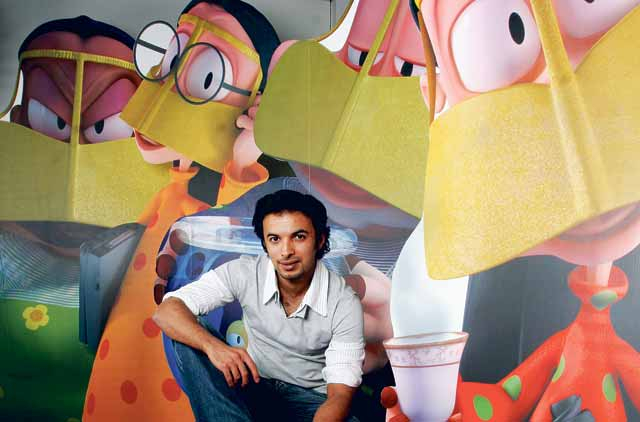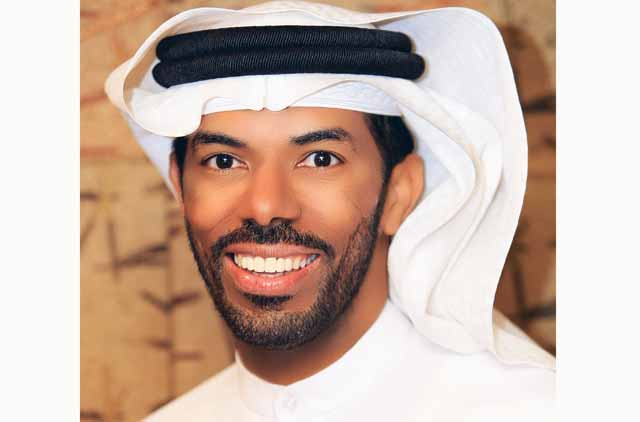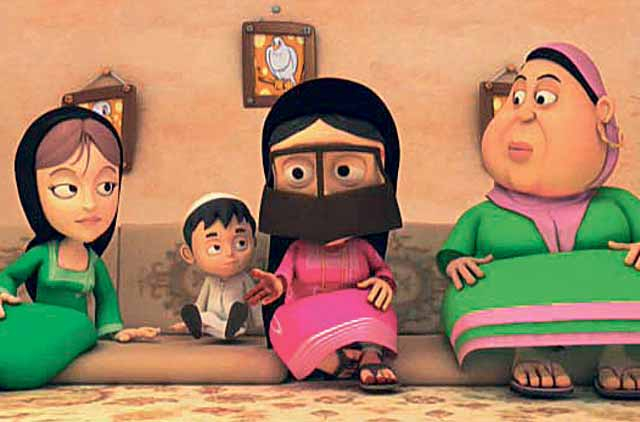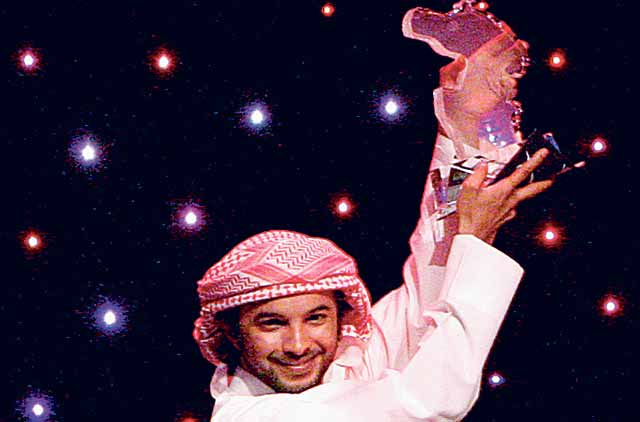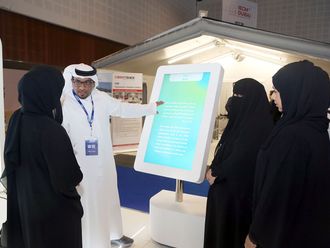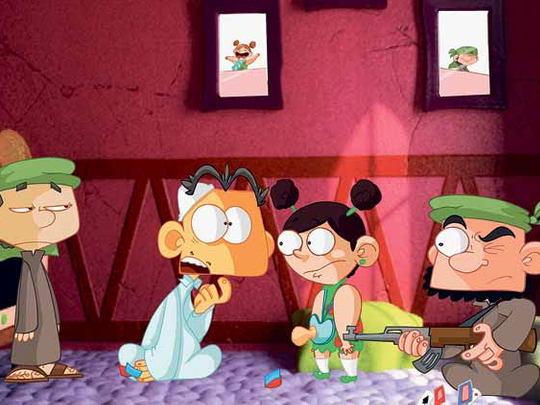
Dubai: The prosperity of the UAE, particularly Dubai, in the past decade, includes a long list of achievements. Among those, building man-made islands, the tallest building on earth, and the longest automated metro system in the region.
Now the boom has also sparked a burst of creativity among many young Emiratis in the field of producing TV animation series.
Interestingly, the fruits of their imagination are expected to cross the borders of their homeland in the near future, and reach other countries, after becoming a big success in the UAE, and winning acclaim across the Gulf region.
For nearly four years, more than one TV series has become a must-watch for both nationals and many expatriates in the UAE mainly during Ramadan.
Some, like Freej (The Neighbourhood) remind viewers of their parents and grandparents' dialects. Others like Sha'biyat Al Cartoon (cartoon of neighbourhoods) and Khoosa Boosa (the name of a children's game in UAE culture) carry certain social and economic messages.
But they all share certain characteristics: they stem and reflect scenes from the heritage, culture and life in Dubai. Also, they are all narrated in a comic way and received with a laugh, if not a guffaw.
Apart from being among the top-watched TV series, the animation series are putting UAE on the global map of animation producers.
Recent agreements have been reached between producers of some of the Emirati animation shows and regional and international companies to broadcast the animation TV series abroad, producers said.
"We have been approached by an international distribution company, which I can't name [at present]," said Mohammad Saeed Hareb, producer and director of Freej.
"This company is one of the biggest in the world, when it comes to international distribution and they kind of suggested we go East [wards] at the beginning," he told Gulf News, in reference to some eastern countries, where "they know our culture" more than western countries.
"I have received offers from three Arab TV channels outside to produce an animated TV show for them," said Haider Mohammad Haider, producer of Sha'biyat Al Cartoon. "But I had to turn them down, because I don't have the technical ability to produce another TV show at present".
Haider expects to start working from his own production facility at Dubai Studio City in the near future.
He has accepted an offer from a "UAE Arab channel" to produce a new cartoon show series. He preferred not to give further details.
While Freej is basically a tale of four old Emirati women living in a modern-day Dubai neighbourhood, Sha'biyat Al Cartoon has four basic characters out of nearly 22 from different nationalities. They live in Dubai facing social issues in a comic manner, "but away from sarcasm".
Khoosa Boosa also has many nationalities in its 18 characters living in Dubai and tackling economic and social issues. The show is also believed to be among the most popular shows among children, because of its theme tune and the several children among its characters.
"The culture of cartoons here in UAE is different [from other places]," Najla Al Shehi, CEO of Busy Bee Studios, which produces the Khoosa Boosa series, said. In the UAE, "it [the cartoon] is not only for children. It is also for older people as well. It is more family-oriented," she added.
"The audience ranges from three years old to 60 years old and above," Najla, who is also the director and script-writer of the series, told Gulf News from her office in Dubai Media City.
A few decades back, cartoon shows were "less violent" than at present, Najla noted, echoing the sentiments of many people who believe current cartoon shows reflect "pure" violence.
The demand for a more "family-oriented" cartoon TV shows is among the main reasons behind the boom in animation shows production in UAE, producers said.
"There is a demand … people like cartoons because it is light," Haider said. "The first thing people do when they read the paper is going to the caricature of the day."
"The simplicity of the language used in the shows is what makes them popular," Najla said. "We don't complicate things. The flow of the language is very natural ... The script writers don't include big names."
Reflecting the pulse of ordinary people in comic style is another factor. Issues raised in the animation series include rent rises, high cost of living, dowries and demographic issues.
While the animation producers praised the government's financial and moral support to their works, they added that they have felt "the pinch" of the global financial crisis.
Each episode of an animated TV show costs nearly Dh400,000.
The high cost of production, due to a lack of sufficient technical support inside the UAE — the three shows are produced with companies based in Singapore, Cairo and Amman — is considered a major obstacle.
Other obstacles, producers said, include "red lines" either drawn by the authorities or the public. "It is a strange thing that I can't find an answer to," Haider said.
"The ceiling of the public censorship is lower than the official censorship. If one of episodes is shown today on TV, I will hear people complain tomorrow on radio."


